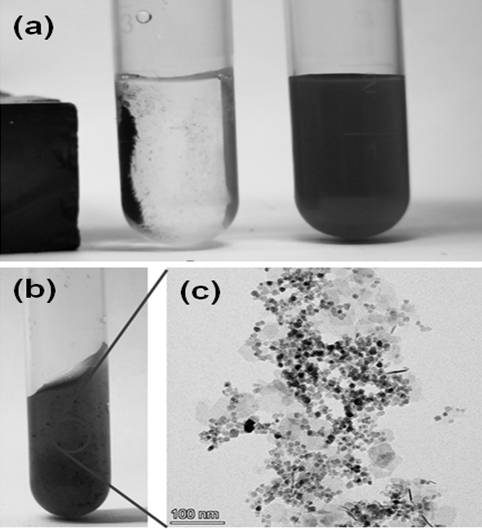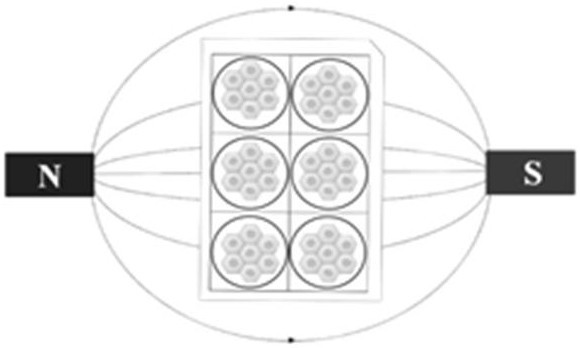Magnetic graphene nano composite gel for targeted inhibition of corneal lesion, preparation method and application of magnetic graphene nano composite gel, and treatment method
A magnetic graphene and nano-composite technology, applied in treatment, magnetic therapy, electrotherapy, etc., can solve the problems of high toxicity and side effects, high magnetic field strength, poor treatment effect, etc., to inhibit expression, eliminate ROS, and improve targeting effect with effectiveness
- Summary
- Abstract
- Description
- Claims
- Application Information
AI Technical Summary
Problems solved by technology
Method used
Image
Examples
Embodiment 1
[0027] A kind of nano gel material of the magnetic suppression technology that is used for non-invasive suppression corneal inflammation, its preparation method comprises the following steps:
[0028] Mix graphite powder and carboxylated polymer in a mass ratio of 1:5-1:10 and place them in a ball mill jar. Ball milling at room temperature for 3-5 hours at a rotational speed of 350-500 rpm to obtain hydrophilic graphene nanosheets. Subsequently, by co-precipitation method, the magnetic nanoparticles Fe 3 o 4 Precipitate to graphene nanosheets to obtain magnetic graphene nanocomposites. Such as figure 1 As shown in (a), the prepared magnetic nanocomposite is brownish yellow and has good magnetic properties. The nanocomposite can be extracted from the solution by adding a magnet. The synthesized magnetic nanocomposites were combined with sodium hyaluronate viscoelastic ( figure 1 b) Ultrasonic mixing, prepared as figure 1 (b) Nanogel solution shown. figure 1 The transmiss...
Embodiment 2
[0030] Primary mouse corneal endothelial cells (MCEC) were planted on a cell culture plate at a density of 5,000-10,000 cells / well and incubated for 24 hrs, and the magnetic nanogel (5-50 μg / mL) obtained in Example 1 was added to the experimental group Co-culture up to 96 hrs. Cell viability was detected by CCK-8 method. Such as figure 2 As shown, in the highest dose group (50 μg / mL), the co-culture of cells and nanomaterials lasted up to 96 hrs, and the relative survival rate of cells was still greater than 100%, indicating that the prepared nanomaterials had good biocompatibility.
Embodiment 3
[0032] The corneal inflammatory cell model was established by planting the same amount of MCEC cells on different cell culture plates, incubating them for 24 hrs until they adhered to the wall, and then adding a certain amount of lipopolysaccharide (LPS) to induce them for 24 hrs to establish the model. Such as image 3 As shown, the magnetic graphene nanogel prepared in Example 1 was added to the cell model, and after overnight, after the cells had naturally settled around the cells, the culture plate was placed in an instrument surrounded by a magnetic field for the magnetic inhibition test .
PUM
 Login to View More
Login to View More Abstract
Description
Claims
Application Information
 Login to View More
Login to View More - R&D
- Intellectual Property
- Life Sciences
- Materials
- Tech Scout
- Unparalleled Data Quality
- Higher Quality Content
- 60% Fewer Hallucinations
Browse by: Latest US Patents, China's latest patents, Technical Efficacy Thesaurus, Application Domain, Technology Topic, Popular Technical Reports.
© 2025 PatSnap. All rights reserved.Legal|Privacy policy|Modern Slavery Act Transparency Statement|Sitemap|About US| Contact US: help@patsnap.com



